Trivia Browser

▲
2
▼
The vehicle-building gameplay of Banjo-Kazooie: Nuts & Bolts has been claimed by many Banjo-Kazooie fans, often with an underlying anti-Microsoft or pro-Nintendo console war motive, to have been a corporate mandate from Microsoft to Rare, who supposedly wanted to make another 3D platformer like the previous games in the series. However, this is a complete lie as the only known influence on Nuts & Bolts from Microsoft was that they wanted Rare to make games aimed toward a younger demographic. Otherwise, the creative decisions made with Nuts & Bolts were entirely on Rare's development team, which was burned out by 3D platformers and genuinely believed that vehicle-building was a natural evolution of the genre.
Reddit posts collecting all of the below sources and specific quotes from them:
https://www.reddit.com/r/BanjoKazooie/comments/grmk7k/comprehensive_list_as_to_reasons_why_nuts_bolts/
https://www.reddit.com/r/BanjoKazooie/comments/gro2kc/child_post_list_of_comprehensive_quotes_from_rare/
GamesRadar 2008 interview revealing Nuts & Bolts has nothing to do with Microsoft's buyout:
https://www.gamesradar.com/banjo-kazooie-nuts-bolts-interview/
IGN 2012 interview revealing demographics mandate:
https://www.ign.com/articles/2012/08/22/ex-rare-member-shares-info-on-cancelled-game
Gregg Mayles 2018 interview revealing Rare wanted a different approach to platformers:
https://www.youtube.com/watch?v=9h9Y55vpHZo
VideoGamer 2008 interview revealing that they thought a platform-centric game would be boring to work on, and was not inspired by user-generated games like LittleBigPlanet:
https://www.videogamer.com/previews/banjo-kazooie-nuts-and-bolts-interview/
Wired 2008 interview revealing Rare thought platforming games stopped being innovative after the Nintendo 64, and the team expanded from 13 to 71 people so they could not make projects like they used to:
https://www.wired.com/2008/05/qa-banjo-kazooi/
Xbox Achievements 2008 interview revealing Rare thought the old movement system was stale, that they wanted players to come up with different solutions to problems, and assumed fans would be mad if they remade a game instead of a making a sequel:
https://www.xboxachievements.com/news/news-1567-x360a-Meets--Rare-and-Talks-Banjo-Kazooie--Nuts---Bolts.html
Gamereactor 2008 interview revealing Rare thought the blockier character designs felt more BK than the smooth versions of N64 models:
https://www.youtube.com/watch?v=rn9Il7IKgEI
The Rare Witch Project 2008 interview revealing Rare believed vehicle-building was the next evolution of platforming games, and that Nuts & Bolts was the third attempt at a third Banjo-Kazooie game:
https://web.archive.org/web/20081223105418/http://www.rarewitchproject.com/?id=1655
Kikizo 2008 interview revealing Rare wanted to test the power of the new Xbox 360 hardware:
http://archive.videogamesdaily.com/features/banjo-kazooie-nuts-and-bolts-rare-interview-p1.asp
Edge Magazine 2010 interview revealing Conker Live & Reloaded's negative fan reception caused Rare to rethink a remake:
https://web.archive.org/web/20101015012359/http://www.next-gen.biz/features/rare-vintage-part-two
Rare 2018 interview revealing Gregg Mayles was bored with the formula and did not know where to take it:
https://www.youtube.com/watch?v=p2QVnSJDAl4?t=3556
Steve Mayles 2020 interview stating Banjo-Threeie is Nuts & Bolts, putting work into reimagined worlds from Banjo-Kazooie is the same amount of work as new worlds, at one point Rare's management moved all but two people from the Banjo-Kazooie project, Xbox Market was different than the Nintendo market so they weren't sure it'd sell, and Rare was burnt out from making 3D platformers:
https://www.youtube.com/watch?v=Dp8n7QKJZHs
https://www.reddit.com/r/BanjoKazooie/comments/grmk7k/comprehensive_list_as_to_reasons_why_nuts_bolts/
https://www.reddit.com/r/BanjoKazooie/comments/gro2kc/child_post_list_of_comprehensive_quotes_from_rare/
GamesRadar 2008 interview revealing Nuts & Bolts has nothing to do with Microsoft's buyout:
https://www.gamesradar.com/banjo-kazooie-nuts-bolts-interview/
IGN 2012 interview revealing demographics mandate:
https://www.ign.com/articles/2012/08/22/ex-rare-member-shares-info-on-cancelled-game
Gregg Mayles 2018 interview revealing Rare wanted a different approach to platformers:
https://www.youtube.com/watch?v=9h9Y55vpHZo
VideoGamer 2008 interview revealing that they thought a platform-centric game would be boring to work on, and was not inspired by user-generated games like LittleBigPlanet:
https://www.videogamer.com/previews/banjo-kazooie-nuts-and-bolts-interview/
Wired 2008 interview revealing Rare thought platforming games stopped being innovative after the Nintendo 64, and the team expanded from 13 to 71 people so they could not make projects like they used to:
https://www.wired.com/2008/05/qa-banjo-kazooi/
Xbox Achievements 2008 interview revealing Rare thought the old movement system was stale, that they wanted players to come up with different solutions to problems, and assumed fans would be mad if they remade a game instead of a making a sequel:
https://www.xboxachievements.com/news/news-1567-x360a-Meets--Rare-and-Talks-Banjo-Kazooie--Nuts---Bolts.html
Gamereactor 2008 interview revealing Rare thought the blockier character designs felt more BK than the smooth versions of N64 models:
https://www.youtube.com/watch?v=rn9Il7IKgEI
The Rare Witch Project 2008 interview revealing Rare believed vehicle-building was the next evolution of platforming games, and that Nuts & Bolts was the third attempt at a third Banjo-Kazooie game:
https://web.archive.org/web/20081223105418/http://www.rarewitchproject.com/?id=1655
Kikizo 2008 interview revealing Rare wanted to test the power of the new Xbox 360 hardware:
http://archive.videogamesdaily.com/features/banjo-kazooie-nuts-and-bolts-rare-interview-p1.asp
Edge Magazine 2010 interview revealing Conker Live & Reloaded's negative fan reception caused Rare to rethink a remake:
https://web.archive.org/web/20101015012359/http://www.next-gen.biz/features/rare-vintage-part-two
Rare 2018 interview revealing Gregg Mayles was bored with the formula and did not know where to take it:
https://www.youtube.com/watch?v=p2QVnSJDAl4?t=3556
Steve Mayles 2020 interview stating Banjo-Threeie is Nuts & Bolts, putting work into reimagined worlds from Banjo-Kazooie is the same amount of work as new worlds, at one point Rare's management moved all but two people from the Banjo-Kazooie project, Xbox Market was different than the Nintendo market so they weren't sure it'd sell, and Rare was burnt out from making 3D platformers:
https://www.youtube.com/watch?v=Dp8n7QKJZHs
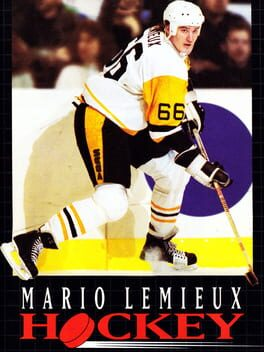
▲
1
▼
Atari Corporation wanted to license out the likeness of hockey player Mario Lemieux for a Lynx game that would've been titled "Super Mario Hockey" as a jab at Nintendo and their Super Mario franchise disguised as a reference to Lemieux's nickname. The game was never made, but eventually Lemieux's likeness would be licensed out to Sega for a 1991 hockey game.
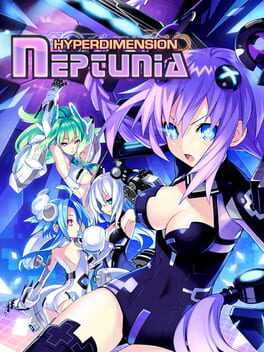
subdirectory_arrow_right Hyperdimension Neptunia (Franchise)
▲
1
▼
The Four CPU goddesses, and the lands they hail from in Gamindustri, are designed and named after consoles from the video game industry:
Neptune (Purple Heart) / Planeptune - The unreleased Sega Neptune. A two-in-one Sega Mega Drive and Sega 32X hybrid.
Noire (Black Heart) / Lastation - Sony's PlayStation 3. Her name is French for the color black.
Vert (Green Heart) / Leanbox - Microsoft's Xbox 360. Her name is French for the color green.
Blanc (White Heart) / Lowee - Nintendo Wii. Her name is French for the color white.
Neptune (Purple Heart) / Planeptune - The unreleased Sega Neptune. A two-in-one Sega Mega Drive and Sega 32X hybrid.
Noire (Black Heart) / Lastation - Sony's PlayStation 3. Her name is French for the color black.
Vert (Green Heart) / Leanbox - Microsoft's Xbox 360. Her name is French for the color green.
Blanc (White Heart) / Lowee - Nintendo Wii. Her name is French for the color white.
Mizuno Naoko interview confirming the console war inspiration and Neptune being based on the Sega Neptune:
https://kotaku.com/hyperdimension-neptunias-creator-dreams-of-a-fighting-g-5947178
General facts article detailing other references:
https://www.thegamer.com/hyperdimension-neptunia-facts/
https://kotaku.com/hyperdimension-neptunias-creator-dreams-of-a-fighting-g-5947178
General facts article detailing other references:
https://www.thegamer.com/hyperdimension-neptunia-facts/

▲
2
▼
The developers of PlayStation All-Stars Battle Royale expressed that they wanted Mario as a playable character in the game as a nod to the Super Smash Bros. series.
IGN interview (Timestamp: 2:14):
https://www.ign.com/videos/playstation-conversation-playstation-all-stars-mario-wish-new-characters
https://www.ign.com/videos/playstation-conversation-playstation-all-stars-mario-wish-new-characters
Platform: Nintendo Entertainment System
▲
2
▼
Shortly after the Famicom's launch in 1983, Atari approached Nintendo offering to distribute the system outside of Japan as the Nintendo Enhanced Video System. Negotiations for the arrangement stalled when Atari saw a demonstration for the Coleco Adam home computer system that used the ColecoVision port of Donkey Kong as a demo title. Because Atari previously gained the exclusive PC port rights to the arcade game, they assumed that Nintendo was also working with Coleco behind their backs. By the time the misunderstanding was cleared up, the North American video game industry had crashed and Ray Kassar had stepped down as CEO of Atari, causing the agreement to be called off entirely. The Famicom wouldn't reach international shores until 1985, when Nintendo began distributing a revised version in North America themselves as the Nintendo Entertainment System.
Ars Technica article:
https://arstechnica.com/gaming/2021/12/time-to-feel-old-inside-the-nes-on-its-30th-birthday/
Classic Gaming article:
https://web.archive.org/web/20051124042223/http://www.classicgaming.com/features/articles/nes20th/
GameSpy article:
https://web.archive.org/web/20040701101711/http://archive.gamespy.com/articles/july03/famicom/index11.shtml
https://arstechnica.com/gaming/2021/12/time-to-feel-old-inside-the-nes-on-its-30th-birthday/
Classic Gaming article:
https://web.archive.org/web/20051124042223/http://www.classicgaming.com/features/articles/nes20th/
GameSpy article:
https://web.archive.org/web/20040701101711/http://archive.gamespy.com/articles/july03/famicom/index11.shtml
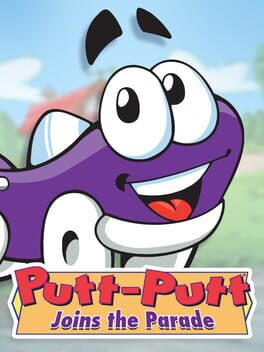
subdirectory_arrow_right 3DO Interactive Multiplayer (Platform)
▲
2
▼
One commercial for the 3DO Interactive Multiplayer line of systems shows a Sega Genesis and Super Nintendo Entertainment System being thrown into a child's toy box, as to refer to the consoles as "baby toys". Ironically, the end of the B-roll in the commercial shows footage from Putt-Putt Joins the Parade, a game intended for a demographic of ages 3 to 8.
Platform: Sega Saturn
subdirectory_arrow_right PlayStation (Platform)
▲
2
▼
In 1992, after the failure of a deal to create a CD-ROM drive for the Super Nintendo Entertainment System, Sony approached Sega of America proposing that they collaborate on a next-generation CD-ROM console to compete with Nintendo. While Sega of America was open to the idea and even started testing the waters between the two companies by having each develop a handful of titles for the Sega CD, Sega of Japan shot down the concept. Consequently, Sony would reorient their efforts towards what would become the PlayStation, while Sega would develop their own next-gen console, the Sega Saturn, in-house. In an interview with Sega-16, Tom Kalinske cited the veto as a factor in his decision to step down as head of Sega of America.
Time Extension article:
https://www.timeextension.com/features/flashback-sega-and-sony-almost-joined-forces-to-battle-nintendo-in-the-90s
Time Extension interview with Kalinske:
https://www.timeextension.com/features/interview-former-sega-president-tom-kalinske-on-the-rise-and-fall-of-a-16-bit-empire
Sega-16 interview with Kalinske:
https://www.sega-16.com/2006/07/interview-tom-kalinske/
https://www.timeextension.com/features/flashback-sega-and-sony-almost-joined-forces-to-battle-nintendo-in-the-90s
Time Extension interview with Kalinske:
https://www.timeextension.com/features/interview-former-sega-president-tom-kalinske-on-the-rise-and-fall-of-a-16-bit-empire
Sega-16 interview with Kalinske:
https://www.sega-16.com/2006/07/interview-tom-kalinske/
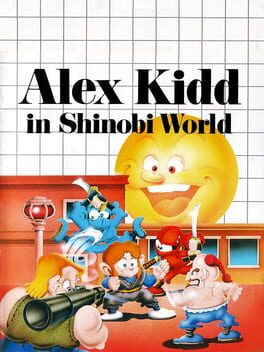
▲
2
▼
 Kabuto, the first boss of Alex Kidd in Shinobi World, is a parody of Ken-O, a recurring first boss in the Shinobi series - in prerelease screenshots, he is shown to be a composite parody of both Ken-O and Nintendo's Mario, known as Mari-Oh. While his appearance would lose its Mario-esque qualities in the final game, two elements of this parody would remain: Kabuto shooting fireballs, and Kabuto becoming small on his final hit point.
Kabuto, the first boss of Alex Kidd in Shinobi World, is a parody of Ken-O, a recurring first boss in the Shinobi series - in prerelease screenshots, he is shown to be a composite parody of both Ken-O and Nintendo's Mario, known as Mari-Oh. While his appearance would lose its Mario-esque qualities in the final game, two elements of this parody would remain: Kabuto shooting fireballs, and Kabuto becoming small on his final hit point.

subdirectory_arrow_right Nintendo (Company)
▲
2
▼
In the Xbox One version of GoldenEye 007, the DK Mode - named after Donkey Kong for changing the proportions of in-game models to those of DK's from Donkey Kong 64 - retains its name. Given that Nintendo were directly involved in the project to re-release GoldenEye 007, with the game having a simultaneous relaunch on Nintendo Switch Online and Microsoft Store, this could be the first time Nintendo has officially allowed their IP to be referenced on a direct rival console.
Platform: PlayStation 2
subdirectory_arrow_right Nuon (Platform)
▲
4
▼
While DVD video playback was a major selling point for the PlayStation 2, Sony didn't plan to support the feature at first, as they were already intending to manufacture standalone DVD players through their home entertainment department. However, after seeing a demonstration for the Nuon, a DVD player by VM Labs with video game support, Sony Computer Entertainment head Ken Kutaragi demanded that a similar level of multimedia functionality be incorporated into the PlayStation 2. The move was met with resistance from Sony's home entertainment wing, who believed that doing so would cause the console to cannibalize sales of their standalone DVD players. However, Kutaragi won out in the end due to the clout that the PlayStation brand had given him.
Techmoan video on the Nuon:
https://www.youtube.com/watch?v=JN_XeVSKqSY
Ars Technica article about the Nuon that mentions its impact on Sony:
https://arstechnica.com/gaming/2015/06/before-the-ps2-nuon-famously-tried-and-failed-to-combine-dvd-and-game-consoles/
https://www.youtube.com/watch?v=JN_XeVSKqSY
Ars Technica article about the Nuon that mentions its impact on Sony:
https://arstechnica.com/gaming/2015/06/before-the-ps2-nuon-famously-tried-and-failed-to-combine-dvd-and-game-consoles/
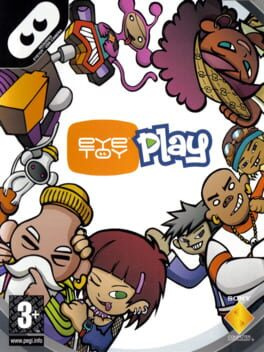
▲
1
▼
EyeToy producer Jamie MacDonald claims that the biggest complement he received over EyeToy: Play was when a marketing director of Nintendo of Europe told him the company was "absolutely gutted" over the casual title's success on Sony hardware in the UK.
Platform: PC (Microsoft Windows)
▲
1
▼
The "Glorious PC Master Race" is a term coined by Ben "Yahtzee" Croshaw of The Escapist in a review of The Witcher, used frequently in the 2010s by fans of PC gaming. Despite being used as a term of endearment by PC gamers, its origins were ironic and intended at the expense of the common gatekeeping against casual gamers in the PC gaming community at the time. Croshaw explained in a 2013 Extra Punctuation article:
"It was intended to be ironic, to illustrate what I perceived at the time to be an elitist attitude among a certain kind of PC gamer. People who invest in expensive gaming PCs and continually spend money to make sure the tech in their brightly-lit tower cases is up to date. Who actually prefer games that are temperamental to get running and that have complicated keyboard interfaces, just because it discourages new or 'casual' players who will in some way taint the entire community with their presence. I meant it as a dig."
Platform: Super Nintendo Entertainment System
subdirectory_arrow_right Sega Mega Drive/Genesis (Platform)
▲
2
▼
"Blast processing" is a marketing term coined by Sega of America to promote the Sega Genesis as the cooler and more powerful console compared to the Super Nintendo Entertainment System. It was such an effective campaign that it caused Nintendo to spend millions of dollars to ramp up their own smear campaign to rebut the claims, helping to create the textbook example of a "console war" between two rivaling video game companies through aggressive marketing and advertising. It is true that Blast processing as presented in advertisements at the time does not exist in any released Genesis game, but its creation was based on a real, low-level progressive processing method that ultimately went unused by developers in their games.
The basic idea is that the hardware's video processor is "blasted" continuously, with the Genesis' 68000 processor working flat-out to change the color of every individual pixel during an active scan, a process where the "guns" on a CRT screen move from left to right and then down to the next line and so on. It was believed at the time that this function could be used to increase the Genesis' somewhat constrained color palette to showcase 256 color static images if timed right (this number would be exceeded by other developers like Jon Burton from Traveller's Tales who later discovered the trick).
Sega of America Senior Producer Scott Bayless claimed that Sega technical director Marty Franz first discovered the trick by "hooking the scan line interrupt and firing off a DMA [direct memory access] at just the right time", as firing it off at the wrong time would result in the scan lines appearing out of phase. This timing/synchronization issue, on top of the more pressing issue of the feature using all of the 68000's CPU time (meaning that while you could run the feature, you couldn't actually play the games that use it), effectively made it useless for cartridge games, and no shipped Genesis games ever used the feature. It’s speculated that it could have been used for Sega CD games, as the add-on had its own CPU that could run the feature, but this also did not come to pass.
The people responsible for the name "Blast processing" are Bayless and Sega of America's PR team. They interviewed him about the specs of the console, and he described to them how the feature could "blast data into the DAC's [digital-to-audio converters]". When talking about how the name came about, he assumed the PR team just liked the word "blast" without understanding what Bayless was explaining, and Blast processing was invented by them to more easily and vaguely sum up the technical capabilities of the Genesis when marketing it. Bayless later expressed reservations about the phrase, calling it "ghastly".
It should also be noted that this feature was apparently not exclusive to the Genesis. In 2020, former Sculptured Software programmer Jeff Peters claimed that they discovered a similar technical trick on the SNES before Sega started using the phrase, but it was focused on audio rather than graphics. He claims that when porting Mortal Kombat to the SNES, Sculptured Software encountered an issue where the amount of graphics data being put onto the cartridge meant that sound had to be cut back drastically. To overcome this problem, Peters and his team used a homegrown system which allowed them to read sounds from the cartridge one at a time and blast them directly to a buffer in the sound memory. While the two tricks were achieving different things, it's interesting to note that both were possible on either console, despite Sega's insistence that only the Genesis could achieve Blast processing.
The basic idea is that the hardware's video processor is "blasted" continuously, with the Genesis' 68000 processor working flat-out to change the color of every individual pixel during an active scan, a process where the "guns" on a CRT screen move from left to right and then down to the next line and so on. It was believed at the time that this function could be used to increase the Genesis' somewhat constrained color palette to showcase 256 color static images if timed right (this number would be exceeded by other developers like Jon Burton from Traveller's Tales who later discovered the trick).
Sega of America Senior Producer Scott Bayless claimed that Sega technical director Marty Franz first discovered the trick by "hooking the scan line interrupt and firing off a DMA [direct memory access] at just the right time", as firing it off at the wrong time would result in the scan lines appearing out of phase. This timing/synchronization issue, on top of the more pressing issue of the feature using all of the 68000's CPU time (meaning that while you could run the feature, you couldn't actually play the games that use it), effectively made it useless for cartridge games, and no shipped Genesis games ever used the feature. It’s speculated that it could have been used for Sega CD games, as the add-on had its own CPU that could run the feature, but this also did not come to pass.
The people responsible for the name "Blast processing" are Bayless and Sega of America's PR team. They interviewed him about the specs of the console, and he described to them how the feature could "blast data into the DAC's [digital-to-audio converters]". When talking about how the name came about, he assumed the PR team just liked the word "blast" without understanding what Bayless was explaining, and Blast processing was invented by them to more easily and vaguely sum up the technical capabilities of the Genesis when marketing it. Bayless later expressed reservations about the phrase, calling it "ghastly".
It should also be noted that this feature was apparently not exclusive to the Genesis. In 2020, former Sculptured Software programmer Jeff Peters claimed that they discovered a similar technical trick on the SNES before Sega started using the phrase, but it was focused on audio rather than graphics. He claims that when porting Mortal Kombat to the SNES, Sculptured Software encountered an issue where the amount of graphics data being put onto the cartridge meant that sound had to be cut back drastically. To overcome this problem, Peters and his team used a homegrown system which allowed them to read sounds from the cartridge one at a time and blast them directly to a buffer in the sound memory. While the two tricks were achieving different things, it's interesting to note that both were possible on either console, despite Sega's insistence that only the Genesis could achieve Blast processing.
Eurogamer article:
https://www.eurogamer.net/digitalfoundry-2019-blast-processing-retro-analysis
Jon Burton video:
https://www.youtube.com/watch?v=o8qgArSqMsc
Scott Bayless interview:
https://www.timeextension.com/news/2022/09/the-man-behind-segas-blast-processing-gimmick-is-sorry-for-creating-that-ghastly-phrase
Jeff Peters claims:
https://www.nintendolife.com/news/2020/05/segas_blast_processing_we_did_it_on_the_snes_first_says_former_sculptured_software_dev
https://www.eurogamer.net/digitalfoundry-2019-blast-processing-retro-analysis
Jon Burton video:
https://www.youtube.com/watch?v=o8qgArSqMsc
Scott Bayless interview:
https://www.timeextension.com/news/2022/09/the-man-behind-segas-blast-processing-gimmick-is-sorry-for-creating-that-ghastly-phrase
Jeff Peters claims:
https://www.nintendolife.com/news/2020/05/segas_blast_processing_we_did_it_on_the_snes_first_says_former_sculptured_software_dev